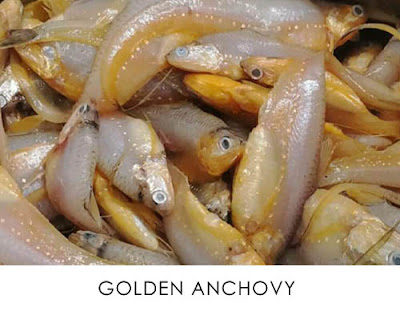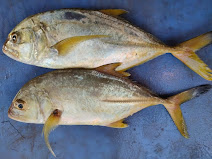Not everything you hear about fish consumption is true. There's a lot of misinformation out there. In this post, we bust 25 myths about seafood, both big and small, to help you put them to rest once and for all. Don’t let these myths fool you into missing out on some of the most delicious, affordable, and nutritious foods available.

Myth: Fresh Seafood is Better than Frozen
The Reality of Frozen Seafood Quality
When high-quality, local seafood isn't available, frozen seafood is an excellent alternative. In fact, frozen seafood often provides more options and extended shelf life. Studies have consistently shown that most people can't distinguish between high-quality fresh and high-quality frozen seafood when prepared similarly. This is because fish is frozen immediately after being caught, preserving it at its freshest point.
Advanced Freezing Technology
Today’s advanced freezing technology ensures the best taste, texture, and nutritional value are retained, making frozen fish just as enjoyable when thawed. The many nutrients in seafood, including heart-healthy Omega-3 fatty acids, remain intact in frozen fish, offering the same benefits as fresh varieties.
Frozen Seafood and Food Safety
For certain types of seafood, such as those intended for raw consumption in sushi, freezing is a legal requirement. This process effectively eliminates harmful parasites, ensuring safety and quality in every bite.
By choosing high-quality frozen seafood, you can enjoy delicious, nutritious meals with convenience and peace of mind.
Myth: You Shouldn’t Mix Seafood and Dairy
Contrary to popular belief, there is no scientific evidence that consuming fish and dairy together causes vitiligo or any other health conditions. However, if you're allergic to fish or intolerant to dairy, it's best to avoid this combination.
Cultural Practices and Culinary Delights
Different cultures have unique culinary traditions. While some avoid mixing fish and dairy for religious reasons, many enjoy dishes like cheesy fish bakes or creamy fish pasta. This combination is particularly popular in South Africa, the UK, and several Asian countries.
Health Considerations and Nutritional Balance
Though not scientifically proven to be harmful, there are some reasons to be cautious about combining fish and milk. This pairing might not be ideal for those with weak immune systems. Some believe it could lead to a nutritional imbalance, as fish provides protein, omega-3 fatty acids, and various vitamins, while milk is rich in calcium and vitamin D. It's thought that consuming these together might hinder nutrient absorption.
Ayurvedic Perspective
Ancient Ayurvedic traditions suggest that mixing fish and dairy can be harmful to health. While modern science doesn't support this claim, it's always wise to consider individual dietary needs and consult with a healthcare professional if you have concerns.
Myth: Seafood is full of mercury, and eating it will harm your body; it should be avoided, especially by pregnant women and young children.
Fact: It is safe to eat fish and seafood as long as you choose those that are low in mercury and follow guidelines for weekly consumption. Avoiding fish during pregnancy can negatively impact gestation and affect the neurodevelopment of children. Ensure all food is fully cooked during pregnancy. Avoid high-mercury fish like shark, swordfish, king mackerel, and tilefish to minimize risk.
Myth: Wild-Caught Fish is Superior; Farmed Fish Quality is Lower
Many people believe that farmed seafood is less nutritious and of lower quality than wild-caught seafood. However, research shows that both wild-caught and farmed fish offer essential nutrients. Farmed seafood is produced under controlled conditions, ensuring consistent quality. Unlike wild-caught fish, aquaculture allows for the improvement of the nutritional quality of the fish through dietary adjustments and nutrient fortification.
Aquaculture also addresses significant challenges, including food security and reducing the strain on wild fish populations. It provides consumers with healthier and more sustainable seafood options.
Myth: Seafood Spoils Too Quickly
Worried about fish spoiling? Frozen fish is a fantastic option, lasting about twice as long in the freezer compared to the refrigerator. Canned seafood boasts an even longer shelf life, provided it's stored according to package instructions. Properly stored seafood, whether fresh or frozen, should have a mild smell and taste.
Myth: Darker Fish are Richer in Omega-3
Contrary to popular belief, the omega-3 content in fish is not determined by its color. Fatty fish like mackerel, sardines, salmon, and tuna are well-known for their high omega-3 levels. Numerous studies highlight that regular consumption of these fish can help prevent cardiovascular diseases. For optimal heart health, include these omega-3 rich fish in your diet.
Myth: Cooking Fish is More Difficult Than Cooking Other Types of Meat
Contrary to popular belief, cooking fish is actually easier than cooking other meats. Seafood cooks faster, making it crucial to avoid overcooking. Many cuts of fish can be perfectly cooked on the stove in under 10 minutes. Additionally, seafood is incredibly versatile, making it a great addition to a variety of dishes such as stir fries, pasta, and salads. Unlike chicken or beef, many types of seafood are safe and delicious when eaten raw or undercooked, reducing the risk of foodborne illnesses from home cooking.
Myth: Eating Meat is Healthier Than Eating Fish
Contrary to popular belief, eating fish offers numerous health benefits that are hard to beat. While both meat and fish provide ample protein, fish boasts high levels of omega-3 fatty acids, which are crucial for heart health. Additionally, fish is rich in phosphorus for strong bones and teeth, potassium for muscle and heart function, and iodine for thyroid health. Calcium, found in fish bones like those of sardines and anchovies, and selenium, a powerful antioxidant, further enhance fish's nutritional profile. While chicken is known for its iron, zinc, and selenium content, fish remains a superior source of lean protein and essential B vitamins, whether fresh or frozen.
Myth: Seafood is Expensive
Many people believe that seafood is costly and best reserved for special occasions, but this is not always the case. Fresh, frozen, or canned seafood can all provide the same nutritional benefits, and affordable options are available to fit various budgets. Price fluctuations in seafood often result from supply and demand dynamics, seasonal availability, and trade issues. Despite these factors, it's possible to enjoy the delicious and luxurious taste of seafood without breaking the bank.
Myth: Only Eat Oysters in Months with an "R"
It's a common belief that oysters should only be consumed in months containing the letter "R" (September to December), excluding the summer months like June, July, and August. This myth originated because warm months coincide with oyster spawning, affecting taste and safety due to increased bacteria. Today, stringent government regulations ensure oysters are safe year-round when properly cooked.
Myth: Seafood Smells Fishy
Fresh fish doesn't inherently smell fishy. Proper storage is key to maintaining freshness and avoiding unpleasant odors. Fish like tilapia, Arctic char, flounder, and cod are excellent choices for those seeking fish without a strong smell or taste. Always purchase from reputable vendors and consider online options for freshness and convenience. Interesting Fact: Fish Smells and Swimming Depth
Did you know fish that swim closer to the surface, like herring or mackerel, tend to be oilier and smellier? In contrast, deeper-laying fish are less pungent due to their different body composition and behavior.
Myth: Avoid Fish on Mondays and Buy on Fridays
An old myth suggests avoiding seafood on Mondays due to freshness concerns from weekend deliveries. However, the freshness of fish depends on the supplier, not the day of purchase. Trustworthy suppliers offer high-quality fish any day of the week, including frozen options that preserve nutritional value and flavor.
Myth: Female Lobsters Taste Better
Contrary to popular belief, the taste of lobsters isn't influenced by gender. The only distinction comes from personal preference for roe found in female lobsters. Both male and female lobsters offer similar taste and texture in their meat.
Myth: Oceans Will Be Depleted of Fish by 2048
The claim that fish stocks would collapse by 2048 has been debunked by recent scientific assessments. Improved fisheries management indicates most fish stocks will be sustainable by 2050.
Myth: Seafood Is Naturally High in Sodium
Sodium levels in seafood vary widely. While some shellfish contain higher sodium levels, fish like salmon, cod, halibut, flounder, tuna, and snapper are naturally low in sodium. This makes them healthy choices for low-sodium diets.
Myth: Eating Seafood During Monsoon is Unhealthy
During the monsoon season, many fish may contain eggs, which can be less healthy for human consumption. Additionally, some fish are preserved with harmful components to extend shelf life, compromising freshness. It might be advisable to limit fish consumption during this time for these reasons.
Myth: Shellfish are High in Cholesterol
While shellfish like shrimp and crab do contain cholesterol, they are low in saturated fat, which has a greater impact on blood cholesterol levels. They are also rich in lean protein, vitamins, and minerals, making them a nutritious choice when prepared without additional saturated fats like butter.
Myth: Imitation Crab is Not Real Seafood
Imitation crab, made from surimi (ground-up fish), is indeed seafood but not crab. It's a processed product designed for longer shelf life.
Myth: Lobsters Are Scavengers
Lobsters are primarily hunters, feeding on live prey such as snails and fish. Their banded claws are a natural defense, not indicative of being scavengers.
Myth: Great Seafood Only on the Coast
Modern transportation, including refrigerated trucks, ensures fresh seafood is accessible inland, dispelling the myth that coastal locations are the only source of quality seafood.
Myth: Mahi Mahi and Dolphin Meat
Mahi Mahi, or dolphinfish, is often confused with dolphins due to similar names, but they are different species entirely. Mahi Mahi is a fish prized for its flavor and is not related to marine mammals like dolphins.
Myth: Cooking Fish Until Brown
Contrary to the myth, fish is best enjoyed when not overcooked to preserve its nutritional value, especially omega-3 fatty acids. Cooking until just opaque and easily flaking with a fork maintains both taste and nutrients.
Myth: Overcooked Seafood
Properly cooked seafood is essential to avoid health risks associated with undercooked fish. While some types can be enjoyed raw when prepared correctly, others must be cooked thoroughly to prevent foodborne illness.
Myth: Straight-Tailed Crawfish
The myth that straight tails indicate poor quality or death prior to cooking is false. Crawfish tails can naturally straighten during cooking and are safe to eat regardless of tail position.
Myth: Sourcing Sustainable Seafood
Contrary to popular belief, sourcing sustainable seafood is feasible through supporting local fisheries and utilizing fish entirely to minimize waste. Awareness has led to improved fishing practices and conservation efforts.
Myth: Dover Sole Origin
Dover Sole refers to common sole found throughout Europe, not just near Dover. It's valued for its delicate flavor and is sourced from various cold-water regions.
Myth: Fish Oil Quality
Fresh fish oil should not smell or taste fishy; a fishy odor indicates oxidation and rancidity, which diminishes its nutritional benefits and could be harmful.
Myth: Aquaculture vs. Wild-Caught
Both aquaculture and wild-caught fish offer safe and nutritious options, with practices like species selection, location, and diet having a greater impact on nutritional quality than the method of catching.
Myth: Tilapia Misconception
Tilapia is a nutritious fish often criticized due to farming practices in some regions. Responsibly sourced tilapia, such as from sustainable farms, provides essential nutrients and is a popular choice in many diets.
Myth: Defrosting Prawns
Defrosting prawns can be done overnight in the fridge or quickly under cool running water, ensuring they are handled gently to maintain their delicate texture.
Continue Reading...






 Truth Behind Popular Seafood Myths - Common misconceptions Exposed and Explained
Truth Behind Popular Seafood Myths - Common misconceptions Exposed and Explained


















